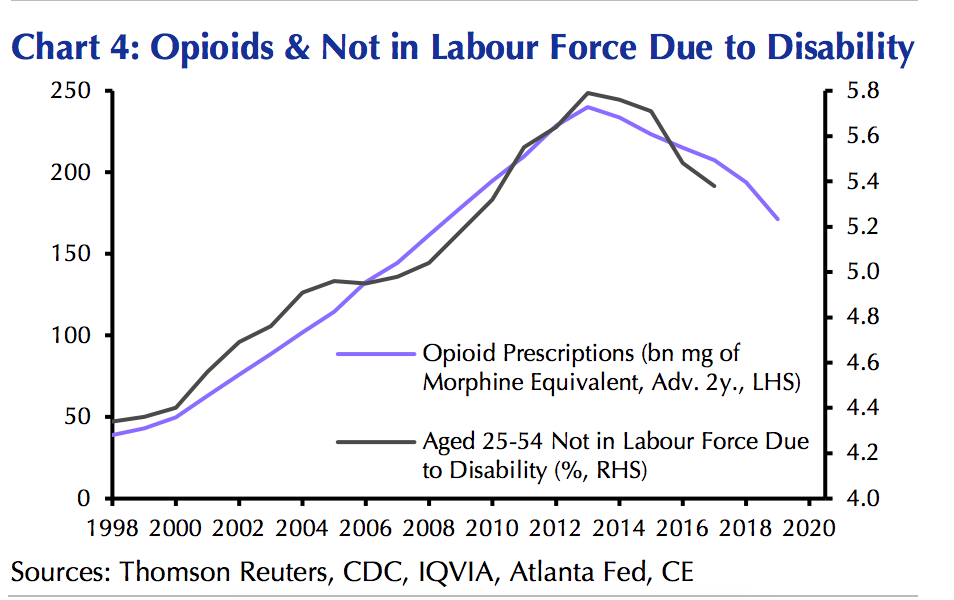As opioid prescriptions fall, more people should be able to work again

The recent decline in opioid prescription volume in the U.S. should give the economy a nice boost, according to a new report from Capital Economics, an independent macro research firm.
A recent report from the IQVIA Institute found that the number of opioid prescriptions issued in the U.S. fell by 12% last year, the largest single-year decline. The IQVIA report also noted that prescription opioid volume peaked in 2011 with 72 pills per adult and has declined to 52 pills per adult.
The opioid crisis plaguing the U.S. has been one of many driving forces behind higher disability rates, which means more people are out of the labor force. As the prescriptions for opioids have declined, disability rates have also dropped.
Capital Economics predicts that this should boost the prime-age labor force participation, those aged 25 to 54, by 0.1% in the next two years.
“That may not sound like a lot, but it would be the equivalent of adding 10,000 people to the [labor] force each month, a significant boost in an economy where the [labor] force is otherwise expanding by around 100,000 or so per month,” Michael Pearce, a Senior U.S. Economist for Capital Economics, wrote. “And it represents a big turnaround from the situation just a few years ago when rising disability was a drag on potential economic growth.”
—
Julia La Roche is a finance reporter at Yahoo Finance. Follow her on Twitter.

